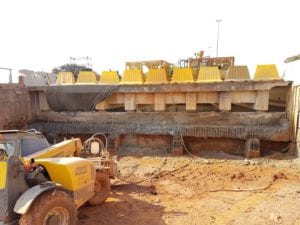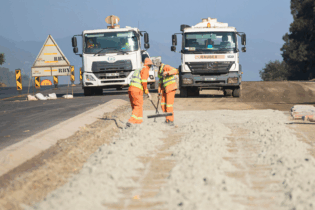
Technology supplied by Total Blasting for this project was specifically developed for concrete demolition and was imported from Europe and the USA
Commissioned by WBHO Construction (Pty) Ltd, in partnership with the South African National Roads Agency SOC Limited, the project involved the complete rehabilitation of the bridges in Rosebank, involving major structural repairs.
Hydrodemolition technology was employed to remove deteriorated concrete from the structures without any damage to existing steel reinforcement.
Supporting cleaner demolition
The hydrodemolition work was completed by Total Blasting, one of the country’s leading water jetting Solutions Company.
Total Blasting Director, Bradley Storer explains, “Hydrodemolition comprises the use of high pressure pumps, water and robotics to break down and remove cement-based materials in situ. It is a special demolition technique that employs high volume.
“It can target the specific demolition area with relative precision, which supports a cleaner demolition site. Unlike conventional demolition methods like jackhammering, hydrodemolition does not damage the rebar or surrounding structure.”
Technology supplied by Total Blasting for this project was specifically developed for concrete demolition and was imported from Europe and the USA. The bridge rehabilitation project was completed within deadline and a total of three Total Blasting employees, with specialised skills in water jetting and hydrodemolition, were deployed to this project for its duration.
Overcoming challenges and delivering
Site access was one of the greatest challenges to the hydrodemolition aspect of the project due to the nature of the roadworks and construction. The team also had to deal with the challenge of channelling sufficient water to site in order to feed the pumps, which was managed by using multiple road tankers to carry the water.
“Hydrodemolition is in its infancy in Africa; the success of this project does not only represent a well-respected client that is highly satisfied with the work we have done, but opens up opportunities for hydrodemolition and water jetting in the southern African concrete repair sector,” Storer concludes.








